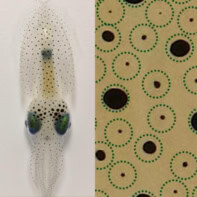
Magnetic robots could be used to kill, degrade and remove biofilms from a variety of dental and laboratory surfaces. The devices, developed by an interdisciplinary team of researchers at the University of Pennsylvania, may help in the fight against persistent antibiotic-resistant biofilm infections and biofouling of medical equipment.
Biofilms are made up of communities of bacterial cells encapsulated in a protective matrix of polymeric substances. They adhere to a variety of surfaces both within the body – where they can cause infections and other complications – or on non-biological structures, such as catheters and implants. Biofilms are complex and mechanically stable scaffolds that can be resistant to antibacterial treatments so removing them is an important challenge – especially as we approach a post-antibiotic era, says Hyun Koo of the School of Dental Medicine, who led this research effort together with Edward Steager of the School of Engineering and Applied Science.
The problem is that current antimicrobial techniques are proving to be largely ineffective for two reasons. The first is that they do not address the structural and biological properties of biofilms associated with drug resistance, say the researchers. The second is the fact that biofilms can rapidly re-establish themselves on a surface and retake a hold.
“Kill-degrade-and-remove” approach
The new “kill-degrade-and-remove” approach developed by Koo and Steager’s teams tackles both these issues thanks to catalytic antimicrobial robots (CARs). These biohybrid platforms are made from magnetic iron oxide nanoparticles suspended in a solution of hydrogen peroxide and enzymes and they generate free radicals on-site that break down the biofilm’s matrix and so kill the bacteria more effectively. Once destroyed, the bacterial biomass debris is “ploughed” away by applying an external magnetic field so the biofilm can’t regrow.
The researchers say they can sweep their CARs over surface areas as large as 150-mm2 or direct them over well-defined paths to locally remove bacteria with microscale precision while leaving surrounding domains intact. This might come in useful, for example, “to remove biofilms without damaging nearby host tissues or to sample biofilms at specific pathological sites, to identify microbial composition,” they explain.

3D printing and genetic engineering bring biofilms to life
Reaching hard-to-access areas
The Penn team also designed a second type of CAR consisting of a 3D moulded soft agar containing magnetic nanoparticles that could remove biofilms from more complex structures, like the curved walls of cylindrical tubes or from hard-to-access areas on teeth. Indeed, the devices are even able to target the most-difficult-to-reach parts of a tooth – the isthmus (a narrow channel between root canals where biofilms – dental plaque – often take hold). In these situations, the CARs “drill” though biofilm clogs while killing the bacteria within them at the same time.
“Existing treatments for biofilms are ineffective because they are incapable of simultaneously degrading the protective matrix, killing the embedded bacteria, and physically removing the biodegraded products,” says Koo. “These robots can do all three at once very effectively, leaving no trace of biofilm whatsoever.”
Full details of the research are reported in Science Robotics.



